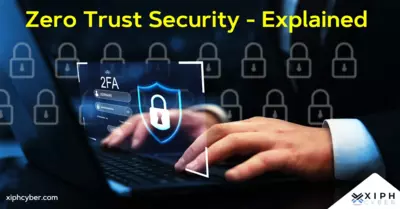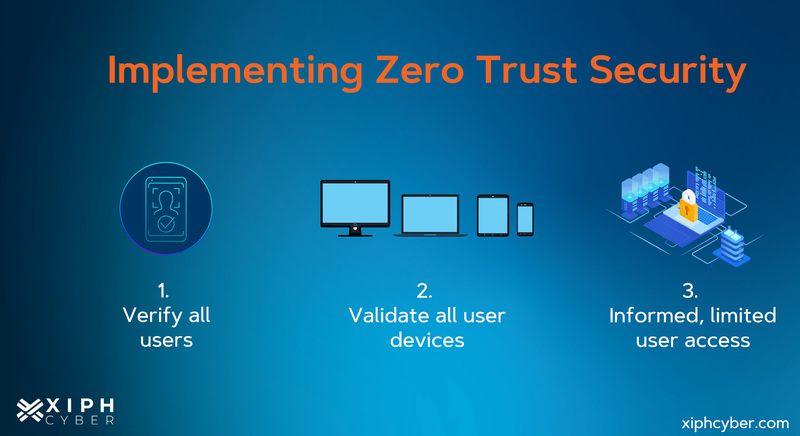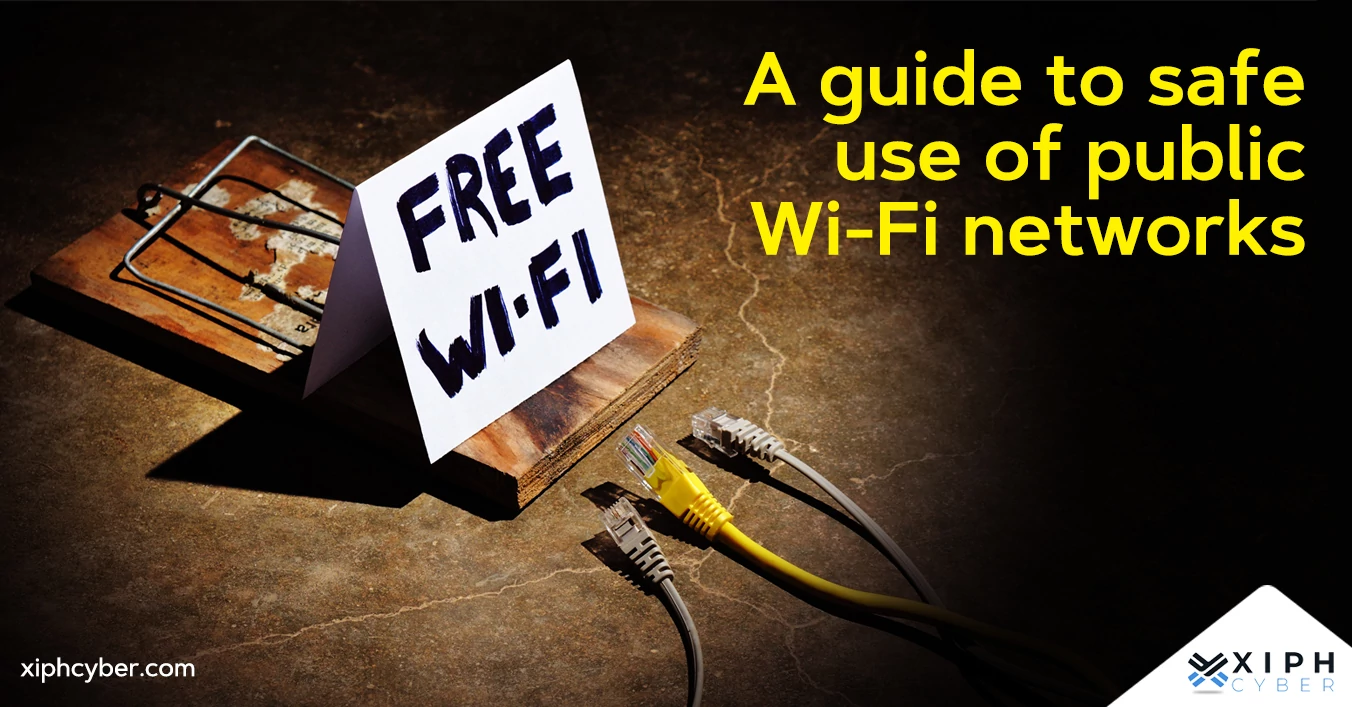Published Dec 29, 2022 by Xiph
In an ideal world, anyone trying to access your business network would be unimpeachable ─ the reality, however, is that you never know when and how hackers might be targeting your sensitive data and information. That’s where Zero Trust security comes in.

What is Zero Trust security?
Zero Trust security or architecture is a cyber security model that combines the concepts of least-privileged access controls and strict user authentication—not assumed trust. A Zero Trust architecture is based on the notion ‘never trust, always verify’ which means it treats every user, device, application/workload, and data flow as untrusted.
Zero Trust requires all internal and external users of an organisation to be authenticated, authorised, and continuously validated for security configuration and posture before being granted or keeping access to applications and data. Zero Trust even applies to access requests coming from within your organisation’s own firewall.
This is in stark contrast to the traditional network access or perimeter security model which is based on the ‘trust but verify’ method that focuses on authentication and establishing checkpoints around your network, but that allows users to move freely anywhere within that network once verified. Network security architecture relies on approved IP addresses, ports, and protocols to establish access controls and validate what's trusted inside the network, generally including users connecting via remote access VPN.
How does Zero Trust security work?

The core concept of Zero Trust is simple: assume everything is hostile by default. This cyber security model is built upon three main guiding principles: continuous validation, least-privileged access, and device access control.
- Continuous validation: Uses a continuous process of user authorisation/monitoring, rather than a one-off login at the point of entry, regardless of where the request originates. This security model requires a user to prove their trustworthiness before it can move through the network and assesses user behaviour patterns continuously.
- Least-privileged access: Application access is restricted based on identity and context. For example, a user might only be able to access applications that are required to perform their job. A Zero Trust model provides security against ransomware and cyber security threats by assigning the least required access needed to perform specific tasks.
- Device access control: Monitors how many different devices try to access the network to ensure that every device is authorised and assesses all devices to make sure they’re not compromised.
Zero Trust treats all traffic (even if it's inside the perimeter), as hostile. For example, workloads are blocked from communicating until they’re validated by a set of attributes, such as multi-factor authentication (MFA). Identity-based validation policies result in stronger security that travels with the workload wherever it communicates—in a public cloud, a hybrid environment, a container, or an on-premises network architecture.
Why is Zero Trust important?
Zero Trust security is a critical component of corporate cyber security designed to protect your data and other digital assets. More than eight in 10 businesses in Australia and New Zealand are moving towards Zero Trust cyber security strategies, according to research commissioned by Datacom.
Zero Trust acts as a force multiplier that restricts access to the entire network by isolating applications and segmenting network access based on user permissions, authentication, and user verification. This secures both users and devices in ways that perimeter-based security cannot. All organisations should be using Zero Trust Network Access (ZTNA) which only permits access to specific applications on a need-only basis instead of the entire network, thus preventing lateral movement and reducing the risk of data loss.
Businesses and the increasing hybrid workforce are now having to deal with more data spread across an almost infinite number of cloud-based technologies, devices, applications, and users. This increases cyber attack surfaces and vectors exponentially, so it’s no longer enough to slap a password onto something or set up a firewall and call it a day. Zero Trust may sound complex but adopting this security model can be relatively simple with the right technology partner. ZTNA is the main technology that enables organisations to implement Zero Trust security.
How to implement Zero Trust in your business
When adopting a Zero Trust architecture for your business, it’s important to consider the following questions:
- What are you trying to protect?
- From what/whom are you trying to protect it?
So, the first step to implementing Zero Trust would be to clearly establish your protect surface ─ or the data, devices, services, and applications where security is most critical. You’ll need to examine the interactions among various applications in your tech stack during this phase.
The next step will be to identify the users in your organisation and their current access levels. This includes all users (including employees and third-party providers) and devices requiring access to your organisation’s resources including contractors, developers, system administrators, routers, workstations, modems, etc.
After that, your organisation can begin the process of micro-segmentation which divides your network into isolated segments to better monitor traffic, user access and workload context. The purpose of micro-segmentation is to reduce the attack surface to a minimum while ensuring the prevention of any unauthorised lateral movement.
Ultimately though, how you choose to implement Zero Trust security will depend on organisation’s size, structure (i.e. remote working, multiple office locations, etc), your IT budget, staff resources, and the number of assets and sensitivity of data you need to protect.
A final word
Zero Trust security is a crucial tenet of corporate cyber security ─ based on the principle that no one should be automatically trusted, irrespective of their user credentials, location, or relationship to your business. The Zero Trust model helps protect companies from cyber attacks through identity-centric protocol and architectural security solutions. Implementing Zero Trust security best practices will mean different things to different companies. For more information on how to best implement Zero Trust security in your business, contact us via email: enquiries@xiphcyber.com.
Posted in: Security


